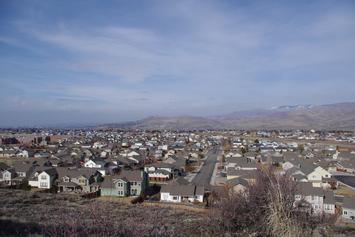
The median price of homes in Auckland, New Zealand’s largest city, grew by $100,000 in February, reports the Real Estate Institute of New Zealand. That means prices were growing by $25,000 a week. The good news is that these are New Zealand dollars, which are only worth about 72 cents U.S., which means prices grew by “only” US$18,000 a week. The bad news is Auckland’s median prices had already reached $1 million (U.S.$720,000) in January, so February’s price increase was only about 10 percent.
Like many American cities with sky-high housing prices, Auckland has an urban-growth boundary, locally known as the Metropolitan Urban Limit, which it adopted in 1998. Advocates claimed that this limit would reduce transportation, utilities, and other costs. Ten years later a former Auckland city planner could only say that the limit was successful because it contained growth within the limit. That’s like saying schools are successful because they contain children.
All over the world, growth policies like Auckland’s have been found to make housing expensive. Such policies in coastal American cities led to the 2006 housing bubble which led to the 2008 financial crisis.
Since then, prices in some American cities have grown to be higher than they were at the peak of the 2006 bubble, even after adjusting for inflation. Are we in another bubble? Is it going to collapse because of the pandemic? Or will pandemic-induced migrations only make it worse?
The Federal Reserve Bank
A number of economists, especially conservatives, blamed the 2006 housing bubble on the Federal Reserve Bank’s policy of keeping interest rates low. The problem with this explanation is that bubbles only took place in some urban areas, particularly those on the West Coast, in the Northeast, and Florida. Most of the rest of the country did not see a sharp rise in housing prices, nor did prices decline until after the 2008 financial crisis.
In particular, Atlanta, Dallas-Ft. Worth, and Houston were the three fastest growing urban areas in the country and did not suffer a bubble. Low interest rates may have made the bubble a little worse in California, but housing had already become unaffordable in most bubble regions before interest rates declined.
This is important because people are beginning to say that the Fed’s low interest rates today are leading to another possible housing bubble. If we continue to misdiagnose the problem, we will continue to fail to solve it.
Low interest rates are a problem. The Fed says it is keeping interest rates low to boost the economy and that it can do so because inflation is low. Economist Mish Shedlack points out that the Fed’s measurement of inflation isn’t properly accounting for housing and health care costs, leading it to dramatically underestimate inflation. Housing “is the largest single component” in the consumer price index, says Shedlack, but the way the Fed measures housing costs completely misses the rises in home prices. The result is that inflation is hurting a lot of people even though the Fed’s top priority is supposed to be to control inflation.
That’s a serious problem, but it doesn’t mean that the Fed is causing this or any other rise in housing prices. It remains true that the biggest fluctuations in prices are in regions that use growth boundaries or other growth-management policies.
The Pandemic and Housing
The pandemic has led to at least a temporary shift in housing preferences, but we won’t know how permanent that shift will be for another year or so. Despite the rise in selling prices in many areas, it is clear that rents have been affected even more. Comparing January 2021 with the same month in 2020, rents have fallen by more than 20 percent in Oakland, San Francisco, Seattle, and several other large cities. Meanwhile, rents have increased by more than 20 percent in smaller or more suburban cities including Durham, Nashville, Riverside, and Scottsdale. The biggest year-over-year changes in home sale prices are in the 10 to 15 percent range.
Read the rest of this piece at The Antiplanner.
Click here to download a four-page PDF of this policy brief.
Randal O'Toole (rot@ti.org) is a senior fellow with the Cato Institute analyzing land-use and transportation policies and the author of American Nightmare: How Government Undermines the Dream of Homeownership.
Photo credit: extremis via Pixabay.













Maybe it's way at equilibrium
Growth limits do have this effect, intended or not, but perhaps the price increases are effective in establishing a capacity limit on desirable areas, which would otherwise become less desirable because of crowding, jams etc.
One downside nevertheless is that non-wealthy offspring in such areas find it difficult to establish their own households there and often must move some distance away from parents/grandparents.